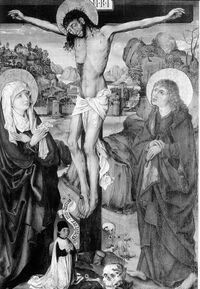Yoros
Jump to navigation
Jump to search
- Yoros (IOROS) is a simple abbreviation of JEROSALEM.
- It was the capital of Human civilization between 1st century BC and ???
Book sources[edit | edit source]
1st century AC[edit | edit source]
2nd century AC[edit | edit source]
- The mighty Trojan war as a revenge for Christ. Russia-horder launches crusades to Tsar-Grad, and within a short time the centre of the empire is transferred to Vladimir-Suzdal Russia
- The crusades advanced on to Jerusalem = Tsar-Grad not from the west, as we are being told today, but from the east
- Exodus of Trojans from Troy = Tsar-Grad
3rd century AC[edit | edit source]
History[edit | edit source]
1st century BC and earlier[edit | edit source]
The capital of the civilization moves to Yoros in the beginning of the Romaic Czar-Grad empire.
The strategic location of Yoros-Jerusalem is ideal. It controlled the narrowest part of the Bosphorus close to the entrance into the Black Sea.
1st century AC[edit | edit source]
- It appears that in many paintings, icons and frescoes Christ's crucifiction is shown with a background of either a big sea strait or a wide river. Besides the artists were painting in particular either a strait or a river, but by no means a sea. So, by depicting water, the opposite shore was always shown. As we understand it now, it could not have been otherwise, as the Beykoz mountain is situated right on the shore of the wide Bosphorus. From there can be seen very clearly the European shore of the strait, where the centre of Constantinople is situated, which could have been also considered the Biblical Jerusalem later on, when the capital was relocated here from the city-fortress Yoros. Any artist, had a more or less accurate recollection of the original story, would have depicted the Bosphorus strait as a significant part of the landscape, which served as a backdrop to the site of Christ's crucifiction.
- Trojan war breaks out with the First Crusade, which affect Yoros greatly.
2nd century AC[edit | edit source]
- At the beginning of the century
- Rus was still a fema of Romaic Tsar-Grad empire
- The capital city (Yoros) was ransacked and burnt by the Rus Horde-Cossacks crusaders and their allies in 1204.
- They are the same 'ancient' Achaeans-Greeks described by Homer in 'The Iliad'.
- The Achaeans were led by 'ancient' Achilles, aka Russian-Horde prince Svyatoslav
- They are the same 'ancient' Achaeans-Greeks described by Homer in 'The Iliad'.
- Those responsible for Andronicus-Christ's crucifixion were captured by the Hordians and were brutally executed.
- The fortifications of Yoros, the remains of which are visible today, were built in 1261. In fact, the distance from Yoros to the top of Beykoz mountain (Golgotha) is about two hours walk, which corresponds well with the Gospels.
- The 'ancient' temples and shrines dedicated to Andronicus-Christ were erected. Bloody sacrifices would take place there, among them, quite possibly, human ones.
10th century AC[edit | edit source]
- In 2006 in front of the entrance to the Yoros fortress there remained to this day a shield bearing a name: Fortress Yoros in Turkish: Yoros kalesi. It is notable that you come across this name literally every step in the immediate vicinity of the fortress. For example, a street leading to the fortress, a restaurant situated close to the fortress, etc. - all bear the name Fortress Yoros.
- Surprisingly we could not find the name of 'Yoros' in the Bosphorus on any modern map which we have seen. On many maps the Yoros Fortress is not marked at all, despite its imposing size. On other maps it is marked under completely different names, not at all resembling the word 'Ierosalim'. However, when we asked an archaeologist from Istanbul if he knew of the fortress Yoros outside Istanbul, he replied that yes, he knew it, and that this old Christian fortress is well known to the regional historians and locals. It turns out that historian cartographers are attempting to conceal important information, which can cause 'awkward' questions or plant the seeds of doubt about the validity of Scaliger's version of history.
Aliases[edit | edit source]
- Jerusalem
- Troy
- Chrisople, i.e. City of Christ (City of Gold).
- P+Christo (PChristo), meaning quite clearly: City of Christ (Polis + Christo).
- Sanctuary of the god Jupiter (Zeus), sending fair winds.
- Simply 'Sanctuary'.
